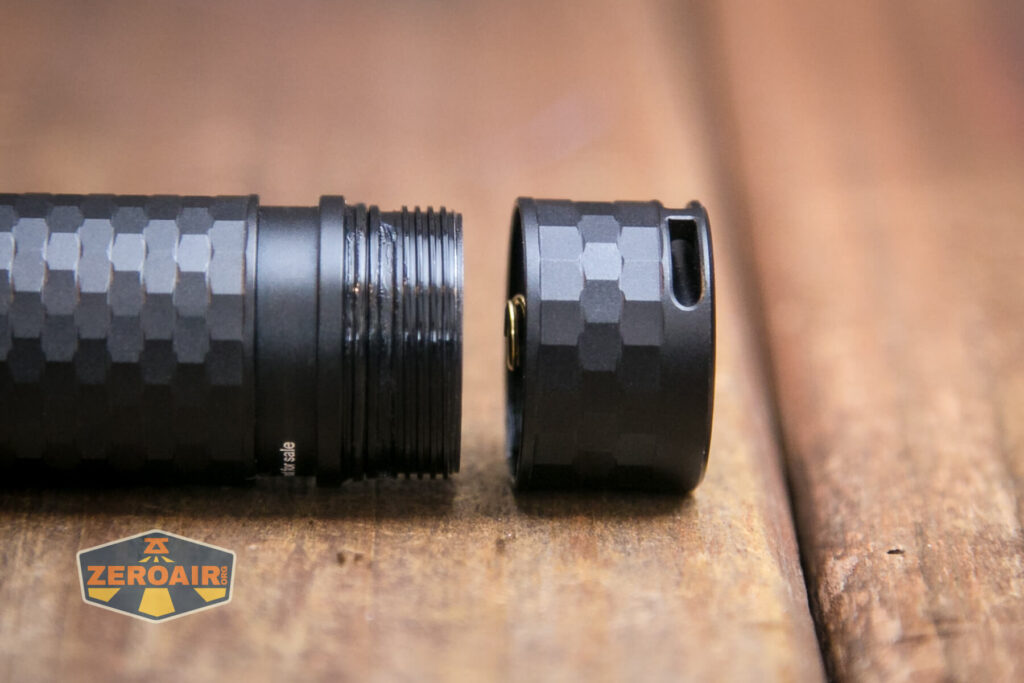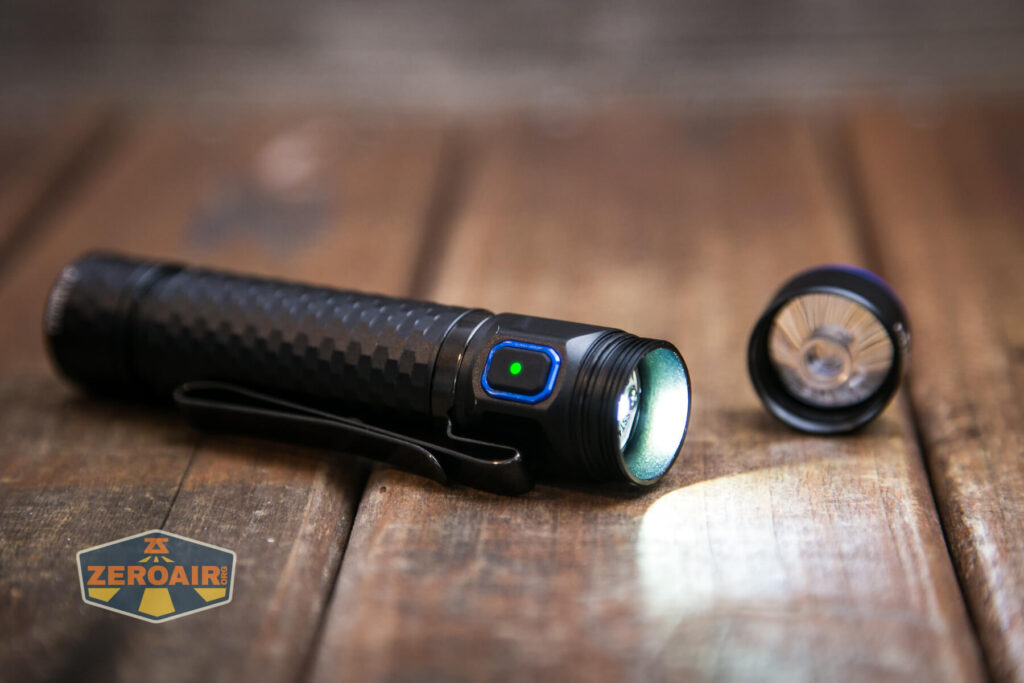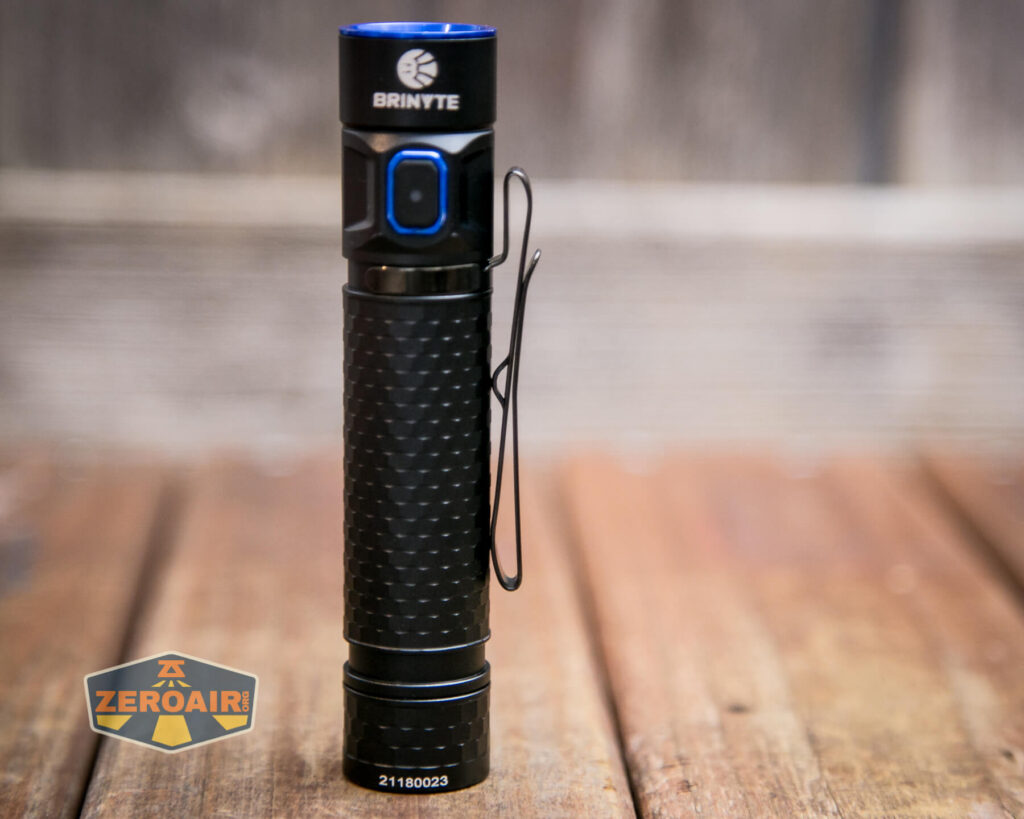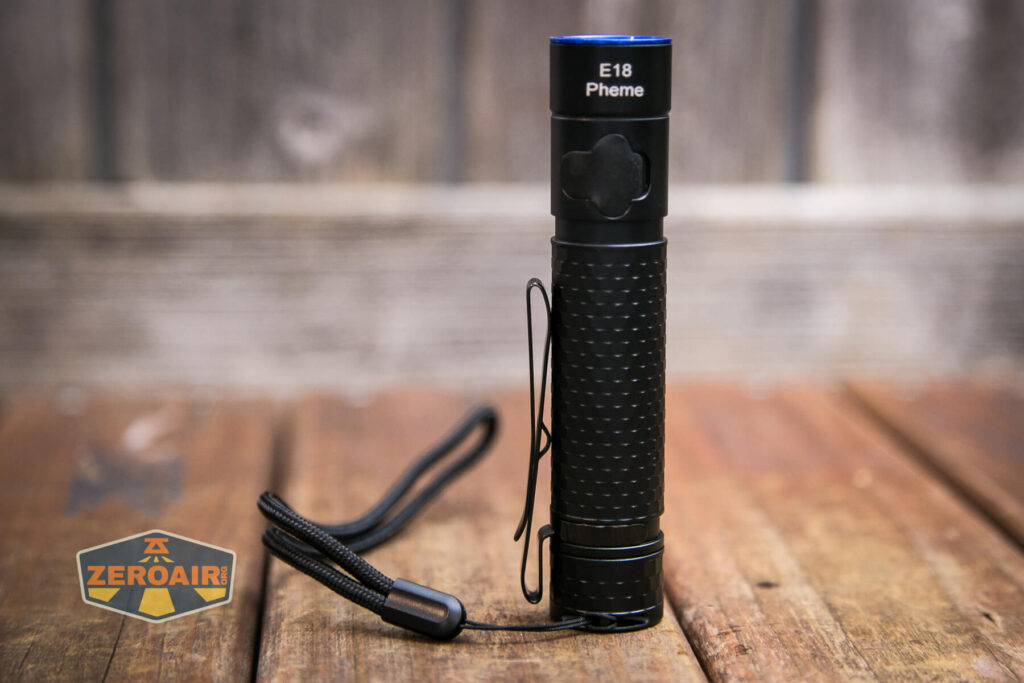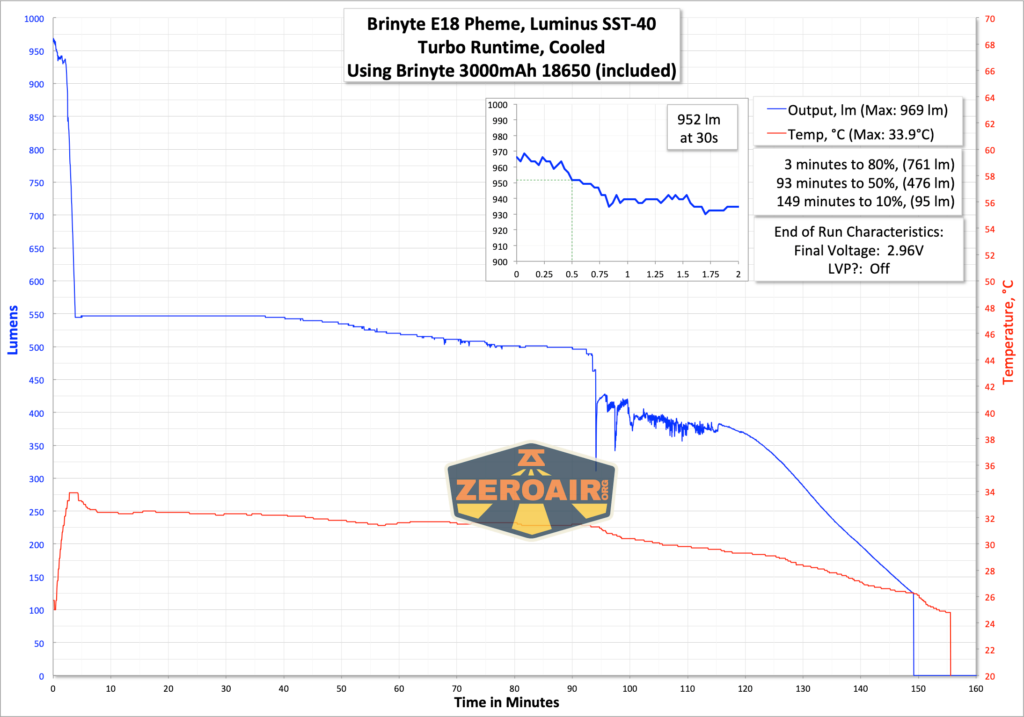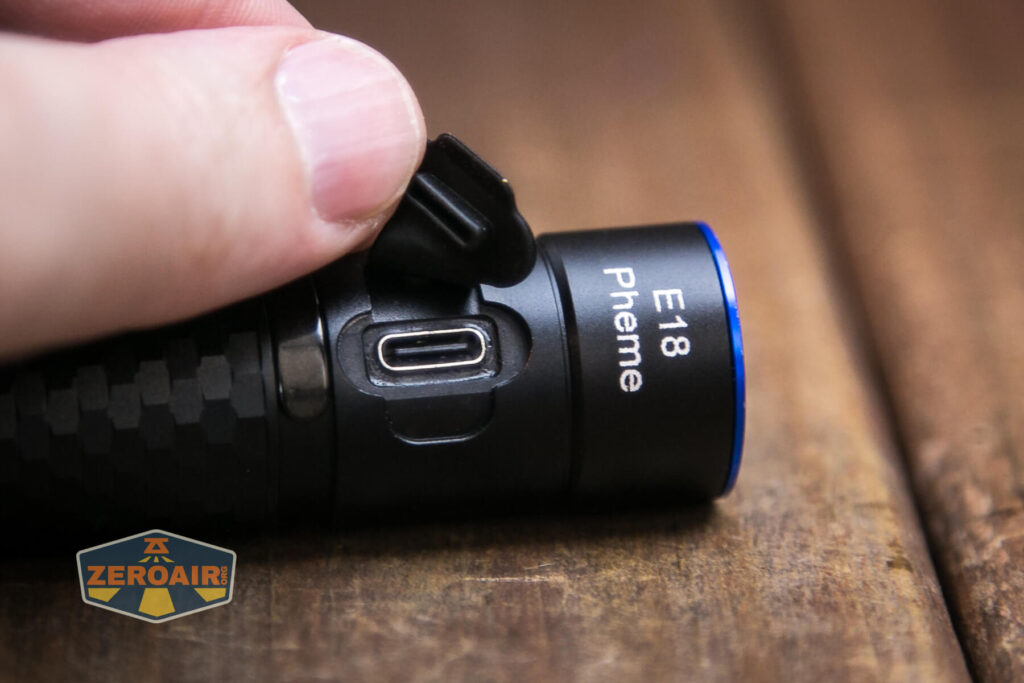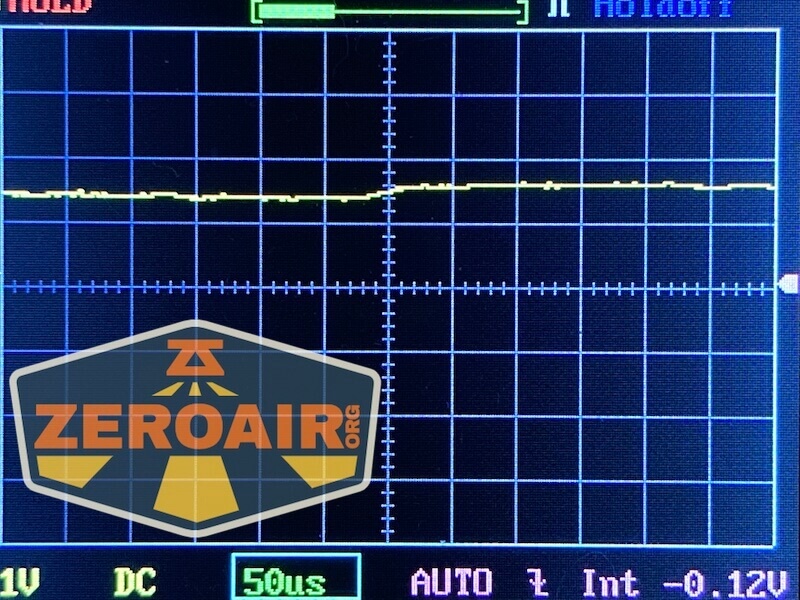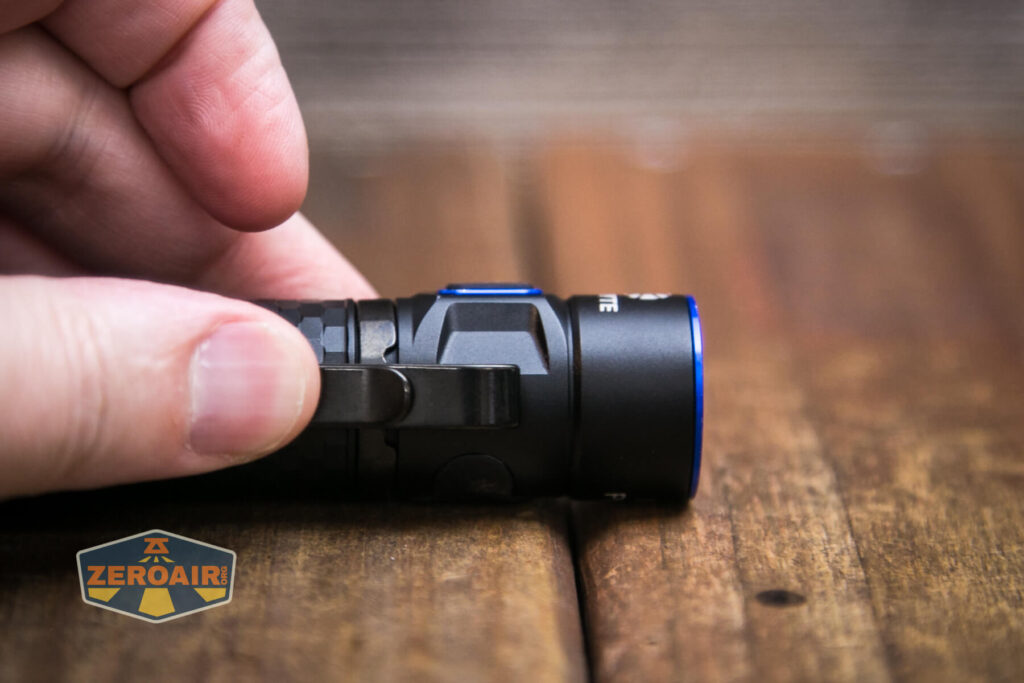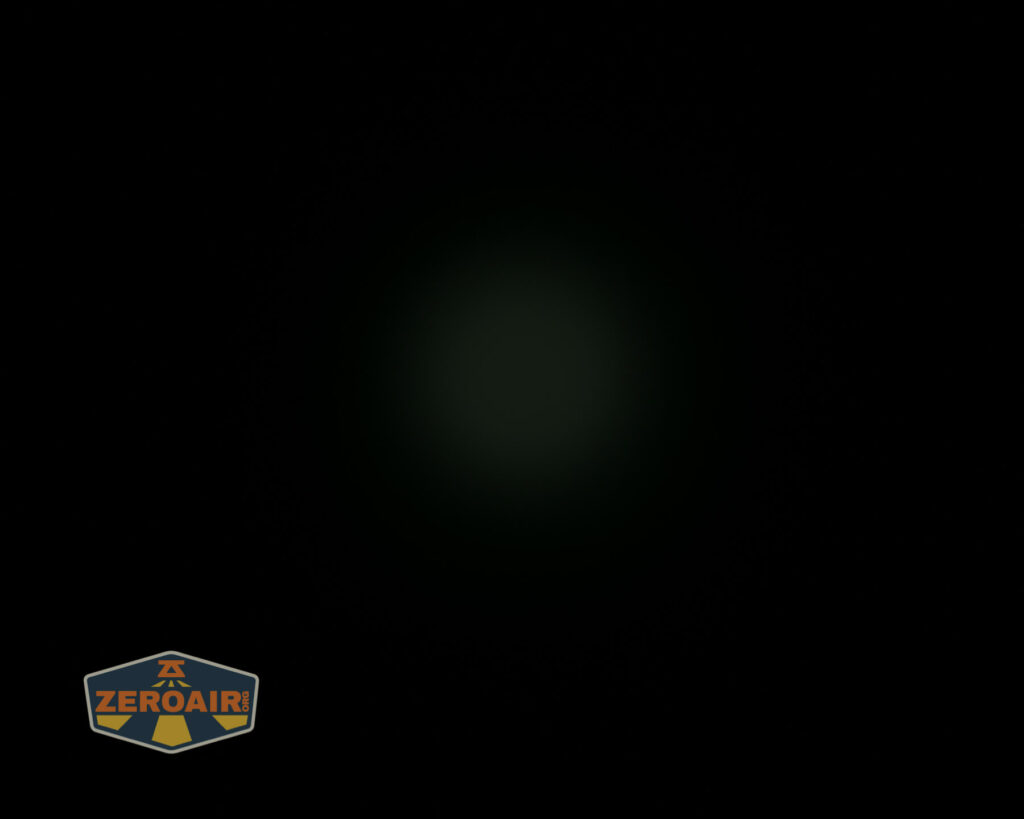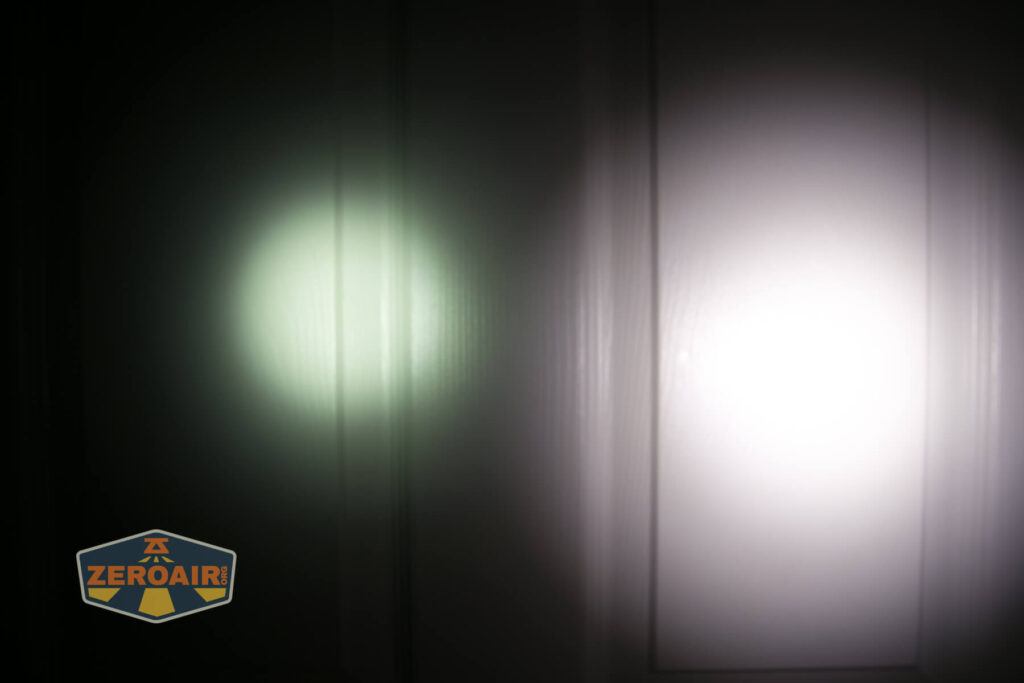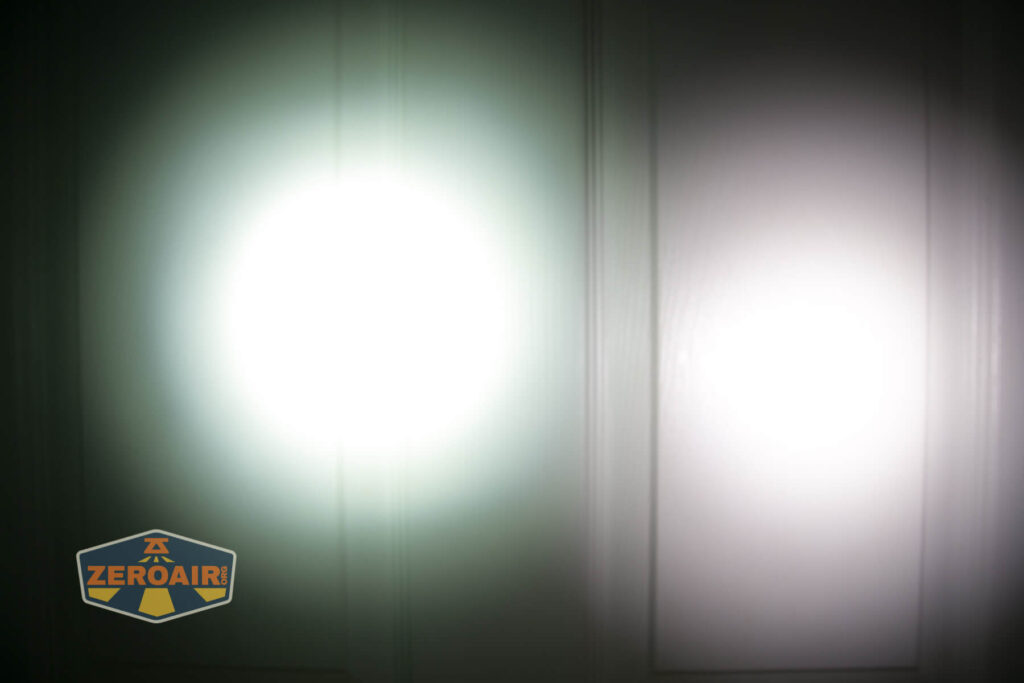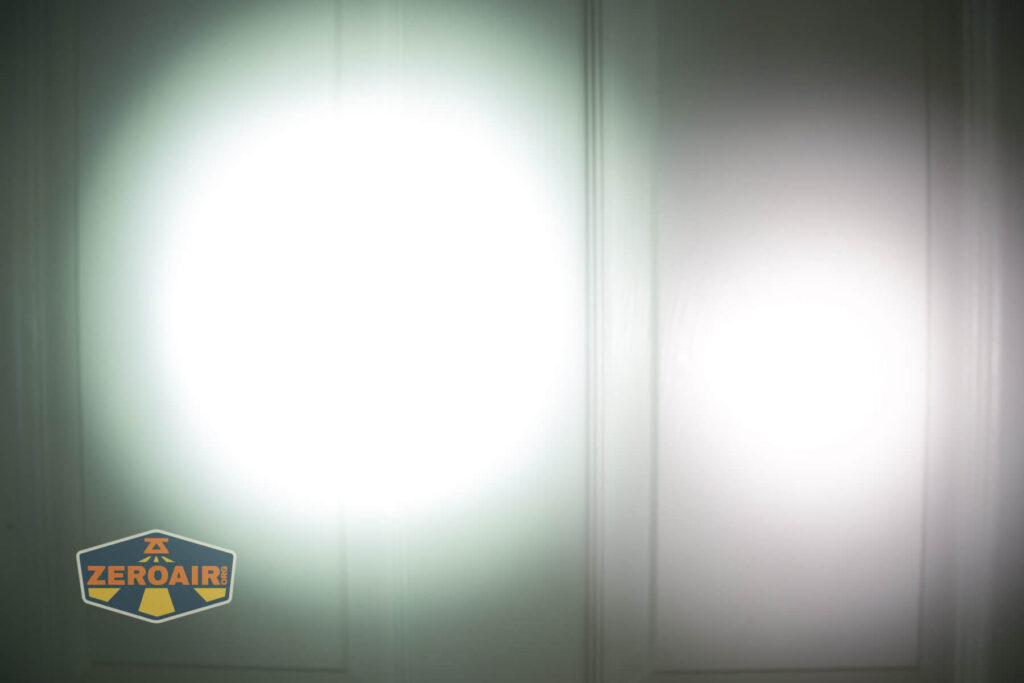Brinyte E18 Pheme Flashlight Review
Brinyte introduced a new EDC flashlight, the E18 Pheme. This light uses a TIR optic and a Luminus SST-40 emitter. A 18650 is included, too!
Official Specs and Features
Here’s a link to the Brinyte E18 Pheme flashlight product page.
Versions
I think there’s only one version.
Price
Brinyte’s website has the E18 Pheme flashlight listed at $69.95.
Short Review
The Brinyte E18 Pheme is a solid little flashlight. The size is pretty good, most notably in that it’s a very narrow light. I appreciate that the E18 uses USB-C charging, but charging seems a touch slow and C to C is not supported. The switch is great and the user interface is too.
Long Review
The Big Table
| Brinyte E18 Pheme Flashlight | |
|---|---|
| Emitter: | Luminus SST-40 |
| Price in USD at publication time: | $69.95 |
| Cell: | 1×18650 |
| Turbo Runtime Graph | High Runtime Graph |
| LVP? | Yes |
| Switch Type: | E-Switch |
| Quiescent Current (mA): | |
| On-Board Charging? | Yes |
| Charge Port Type: | USB-C |
| Charge Graph | |
| Power off Charge Port | with cell: lowest 3 modes without cell: lowest 3 modes without tailcap: lowest 3 modes |
| Claimed Lumens (lm) | 1200 |
| Measured Lumens (at 30s) | 952 (79.3% of claim)^ |
| Candela per Lumen | 15.3 |
| Claimed Throw (m) | 220 |
| Candela (Calculated) in cd (at 30s) | 510lux @ 4.733m = 11425cd |
| Throw (Calculated) (m) | 213.8 (97.2% of claim)^ |
| Claimed CCT | – |
| Measured CCT Range (K) | 5600-6200 Kelvin |
| Item provided for review by: | Brinyte |
| All my Brinyte reviews! | |
^ Measurement disclaimer: Testing flashlights is my hobby. I use hobbyist-level equipment for testing, including some I made myself. Try not to get buried in the details of manufacturer specifications versus measurements recorded here; A certain amount of difference (say, 10 or 15%) is perfectly reasonable.
What’s Included
- Brinyte E18 Pheme flashlight
- Brinyte 3000mAh 18650
- Charging cable (USB to USB-C)
- Lanyard
- Spare o-rings (2)
- Manual
Package and Manual
Build Quality and Disassembly
I mentioned above that one thing I like about the Brinyte E18 Pheme flashlight is how narrow it is. Well, that’s true and great, but that comes at the cost of thinner walls. I think you can feel that in the body. When everything is screwed down, the light just feels solid. But removing the tailcap and swapping cells or whatever – you’re likely to notice the thickness.
However, that might never matter to you! The E18 has built-in charging, so you don’t necessarily ever have to even remove the tailcap (or “rarely” have to).
If you do, you’ll note that the tailcap threads are very smooth. They’re square cut, anodized, and appropriately lubed.
The tailcap has a big beefy spring, and this spring holds in a magnet, too. More on the magnet later.
One nice thing about the Brinyte E18 Pheme flashlight is that the bezel can be removed easily too!
Thus, if you wish to swap emitters, you should have good luck as the MCPCB is very accessible.
Size and Comps
23.6mm x 23mm x 115.5mm
Without battery: 66g.
If the flashlight will headstand, I’ll show it here (usually the third photo). If the flashlight will tailstand, I’ll show that here, too (usually the fourth photo).
Here’s the test light with the venerable Convoy S2+. Mine’s a custom “baked” edition Nichia 219b triple. A very nice 18650 light.
I find this size comparison unusually helpful. This is essentially the size of an S2+, but slightly narrower (which is great) and slightly shorter (also great.) Notably this light adds charging, but is smaller!
And here’s the light beside my custom engraved TorchLAB BOSS 35, an 18350 light. I reviewed the aluminum version of that light in both 35 and 70 formats.
Brinyte is a neat company and often includes things like this cap with review samples.
Retention and Carry
Mainly, you’ll probably use the included and attached friction-fit pocket clip for carrying the E18 Pheme. This is a two-way clip and has a grip bump on the backside.
It’s a fine clip. I don’t care about the two-way-ness of it, but it works well as a normal clip.
Also, the clip can fit on both ends of the light (which makes the two-way sort of superfluous, right?)
Clip hug!
There’s also a lanyard, and the primary place to attach it will be this spot on the tailcap.
Fortunately it’s possible to tailstand with the lanyard installed.


Remember I said I’d mention the magnet? Here we go. The magnet is pretty useless. It’s possible to hang the light on something by the magnet but the light will fall if placed sideways. I suppose that’s fine, but I need a magnet that will suck the chrome off a bumper.
Power and Runtime
Brinyte includes the required cell for operating the E18 Pheme. It’s a button top 18650. I failed to get my usual host of photos of this cell, but it’s a 3000mAh cell that’s standard in all ways.
The cell goes into the Brinyte E18 Pheme flashlight in the normal way – positive end toward the head.
Here are a few runtimes. The output seems to miss the target by a bit, but the throw is on point. I’ll call that acceptable. By the way – this light is very throwy!
The switch does indicate cell voltage while the light is being used, as follows:
Green: 100-30% power
Red: 30-10% power
Red flashing: <10% power
I didn’t really worry about that in practice; the light shuts off around 3V reliably.
Charging
USB-C charging is used on the Brinyte E18 Pheme flashlight. The charging port is opposite to the switch, and there’s very little chance you’ll confuse the two when using the light blind.
An appropriate cable is included – USB to USB-C.
Here are a couple of charging cycles. Charging is acceptable, but a bit slow. This 3000mAh cell could certainly comfortably handle more than 1A (even 1.5A should be long-term-safe.)
The switch also indicates charging state: when charging, it indicates as follows:
Green: Charged
Red: Charging
C to C charging does not work.
Modes and Currents
| Mode | Mode Claimed Output (lm) | Claimed Runtime | Measured Lumens | Tailcap Amps |
|---|---|---|---|---|
| Turbo | 1200-550 | 2m-110m | 952 | 4.03 |
| High | 450 | 170m | 431 | 1.20 |
| Mid | 115 | 630m | 116 | 0.29 |
| Low | 35 | 2400m | 40 | 0.09 |
| Moon | 5 | 13200m | 6.5 | 0.01 |
Pulse Width Modulation
There’s no PWM on any mode, but a couple of the higher modes have a bit of sawtooth. I did not find it to be noticeable, though.
Here you can see a “baseline” – a chart with almost no light hitting the sensor.
Then there’s the Ultrafire WF-602C flashlight, which has some of the worst PWM I’ve seen. It’s so bad that I used a post about it to explain PWM! Here are multiple timescales (10ms, 5ms, 2ms, 1ms, 0.5ms, 0.2ms) to make comparing this “worst” PWM light to the test light easier. That post also explains why I didn’t test the WF-602C at the usual 50us scale.
User Interface and Operation
A single switch is used to control the E18. It’s a proud e-switch on the head, sitting in a proud bump on the body.
That said, I didn’t ever accidentally activate the switch. If you are prone to that problem, remember that the pocket clip can go either way (and in either way, it’s still a two-way), so you have plenty of options to get the switch in your pocket where you want it, to avoid accidental activations.
The action is very low, quite clicky, and reliable from any spot on the pad. I really like this switch!
Here’s the indicator feature, in green. It can also go red.
Here’s a user interface table!
| State | Action | Result |
|---|---|---|
| Off | Click | On (Memory) |
| On | Click | Off |
| On | Hold | Mode advance (Low to high direction) |
| Any | Double Click | Turbo |
| Any | Click 3x | Strobe |
| Off | Click 5x | Lock |
| Lock | Click 5x | Unlock |
LED and Beam
Brinyte uses a Luminus SST-40 in the E18 Pheme. This is coupled with a sort of unusual TIR optic.
The bezel unscrews easily, so if you want to swap emitters you should be good to go. Here’s a better look at the optic – this is what makes the light so throwy!
LED Color Report (CRI and CCT)
There aren’t really any surprises here with the Luminus SST-40 emitter. It’s Neutral White trending toward Cool, and low CRI.
Beamshots
These beamshots always have the following settings: f8, ISO100, 0.3s shutter, and manual 5000K exposure. These photos are taken at floor level, and the beam hits the ceiling around 9 feet away.
Tint vs BLF-348 (KillzoneFlashlights.com 219b version) (affiliate link)
I keep the test flashlight on the left and the BLF-348 reference flashlight on the right.
I compare everything to the KillzoneFlashlights.com 219b BLF-348 because it’s inexpensive and has the best tint!
Conclusion
What I like
- Slim design
- Interesting body design (not “knurling” – not sure what to call it)
- USB-C charging
- Very throwy!
- Clip can go on either end
- Complete package
- Standard 18650 cell (button top!)
- Light works while plugged in to C power even without cell or tailcap
What I don’t like
- C to C charging doesn’t work
- Low CRI
- Magnet not really strong enough to do anything
- Cost – $70 seems a bit steep here
Notes
- This content originally appeared at zeroair.org. Please visit there for the best experience!
- For flashlight-related patches, stickers, and gear, head over to PhotonPhreaks.com!
- Please use my amazon.com referral link to help support zeroair.org!
- Please support me on Patreon! I deeply appreciate your support!

















